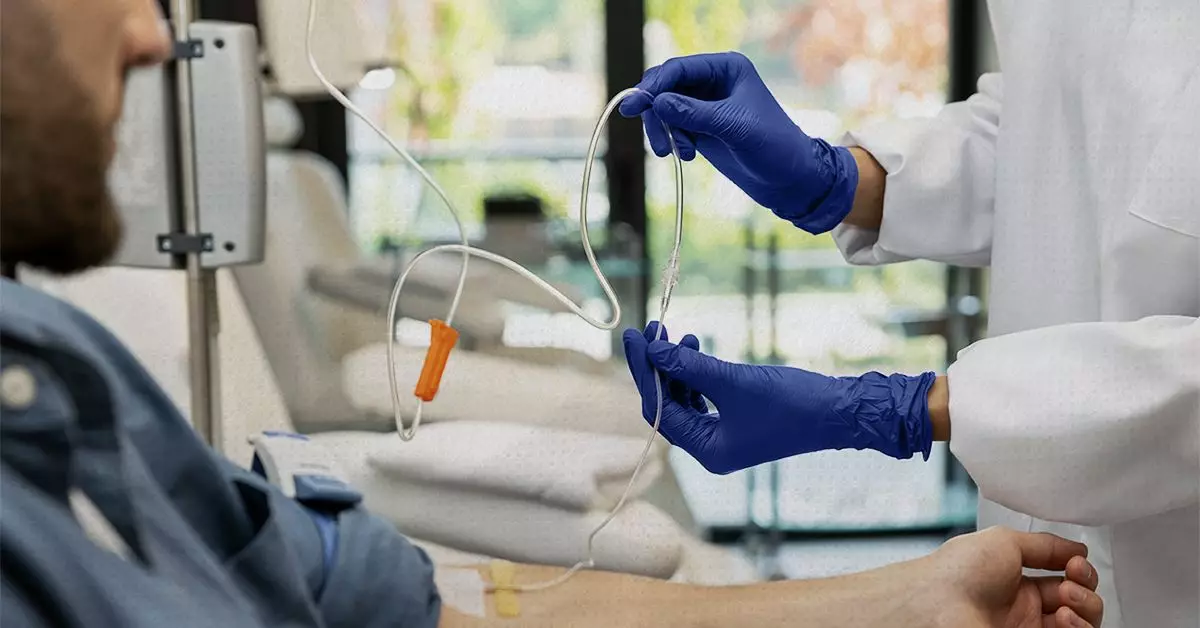Lymphoma, a type of cancer that originates in lymphocytes, has a complex and varied treatment landscape. With multiple approaches available, patients often find themselves navigating a maze of medical jargon and differing opinions on the best path forward. This article breaks down the available treatments, considerations for each option, and the unique aspects of managing lymphoma.
In some instances, treatment for lymphoma may not be necessary immediately. This strategy is known as watchful waiting, where healthcare providers closely observe the patient’s condition without administering treatment unless symptoms manifest or worsen. This approach is particularly applicable for slow-growing forms of lymphoma, commonly referred to as indolent lymphoma.
Patients and doctors must maintain a delicate balance between monitoring the disease’s progression and the mental toll that watchful waiting can carry. Regular check-ups are essential, as timely intervention can significantly affect the disease’s trajectory. Yet, for some, the decision to delay treatment can offer peace of mind, allowing them to focus on their quality of life while keeping a watchful eye on their health.
Chemotherapy: The Traditional Powerhouse
Chemotherapy remains a cornerstone of lymphoma treatment, especially for non-Hodgkin’s lymphoma. This regimen relies on potent drugs designed to kill cancer cells, administered either as pills or through intravenous routes. Despite its longstanding reputation, chemotherapy can evoke a spectrum of side effects, including nausea, fatigue, and immune system suppression, making the treatment experience challenging.
It’s essential for patients to engage in discussions with their oncologists about the potential benefit versus the debilitating side effects of chemotherapy. Sometimes, chemotherapy may be combined with other treatments, enhancing its effectiveness but also amplifying the risk of severe side effects.
Radiation therapy, particularly external beam radiation, uses high-energy beams aimed at the affected lymph nodes. This treatment can be particularly effective in early-stage lymphomas, and it may also serve as palliative care to alleviate symptoms in advanced cases.
While painless during administration, radiation can lead to side effects such as skin irritation, fatigue, and gastrointestinal issues. Patients preparing for radiation must have candid discussions with healthcare professionals about what to expect, enabling them to prepare for both immediate and long-term effects.
Emerging as a powerful tool against lymphoma, immunotherapy seeks to enhance the body’s own immune response to target cancerous cells. A common form of this treatment involves monoclonal antibodies, such as rituximab, which can be prescribed alongside chemotherapy. These drugs can help reduce tumor size and improve treatment outcomes but are not without serious side effects, including allergic reactions and immune system complications.
Within immunotherapy, bispecific T-cell engagers and CAR T-cell therapy represent advanced approaches. The latter involves reengineering a patient’s T cells to better recognize and combat lymphoma cells. However, the complexity and potential severity of side effects associated with CAR T-cell therapy necessitate that it is performed in specialized medical centers.
Targeted therapy introduces a more tailored approach, focusing on specific molecules involved in cancer growth, unlike traditional chemotherapy. Various drugs target distinct proteins within cancer cells, potentially resulting in fewer side effects compared to conventional treatments. However, reactions can still include fatigue and nausea, highlighting the importance of monitoring during treatment.
Targeted therapy is particularly beneficial for certain types of lymphoma and often serves as a primary treatment or complements other modalities. Patients must work closely with their healthcare team to determine if targeted therapies align with their individual medical profiles and treatment goals.
Bone marrow transplantation, also known as stem cell transplantation, is another critical option available for lymphoma patients, particularly for those who may not respond to other treatments. This complex procedure requires high-dose chemotherapy to eradicate unhealthy cells followed by reinfusion of either stem cells harvested from the patient or a compatible donor.
Eligibility for this procedure is often contingent upon numerous factors, including the patient’s overall health and age. Thorough consultations with oncologists are necessary to weigh the potential benefits against inherent risks and complications associated with the transplant process.
Treatments for lymphoma are multifaceted and continue to evolve as research progresses. The decision-making process can be overwhelming, coupling medical considerations with personal preferences and lifestyle impacts. By understanding treatment modalities and engaging in open discussions with healthcare providers, patients can have a more empowered role in charting their path forward. With a forward-thinking approach, many individuals with lymphoma can pursue effective treatments tailored to their unique circumstances, significantly enhancing their outlook and quality of life.

